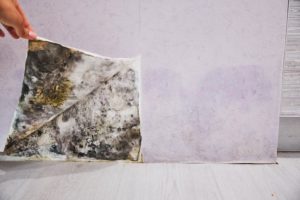
Mold growth can be caused by a variety of things, including over-cleaning. A recent University of Oklahoma study reveals that instead of the intended effect, over-cleaning a home actually leads to increased mold growth due to a lack of natural competition. For many years, those who live in urban homes have believed that keeping our homes squeaky clean will protect us from harmful pathogens such as bacteria and fungus.
A recent University of Oklahoma study reveals that instead of the intended effect, over-cleaning a home actually leads to increased mold growth due to a lack of natural competition. For many years, those who live in urban homes have… Click To TweetIndeed, we’ve developed chemicals that kill off harmful bacteria such as salmonella, e-coli, and staphylococcus aureus. But we know now that these chemicals are causing resistant bacteria as well as killing off good bacteria too. However, in the past decade, more discussion has taken place around microbial resistance and destruction of the helpful human and environmental biomes due to our cleaning practices.
Some of us are unsure about how seriously we should take this issue. With the rise of dangerous and resistant bacteria, many of us are feeling confused. Do we want to decrease our cleaning frequency? Should we switch to other products that create microbial balance rather than killing them off?

The findings from a new study by Laura-Isobel McCall, a biochemist from the University of Oklahoma, may help us make some decisions 1. These study results not only back up existing knowledge around the role bacteria and fungus in the home biome, but they give us some new information to consider.
 The study compared fungal diversity between urban and rural settings in the Amazonia region of Peru and Brazil. Fungal diversity refers to the number of different species of fungus found in a specific area. The urban settings studied were apartments and homes in city environments, whereas the rural settings were in remote villages where people lived amongst nature. The study also looked at the fungal diversity for both the feet and guts of inhabitants in both locations.
The study compared fungal diversity between urban and rural settings in the Amazonia region of Peru and Brazil. Fungal diversity refers to the number of different species of fungus found in a specific area. The urban settings studied were apartments and homes in city environments, whereas the rural settings were in remote villages where people lived amongst nature. The study also looked at the fungal diversity for both the feet and guts of inhabitants in both locations.
The results showed an increase of fungus in urban settings compared to rural ones. Urban environments have much higher quantities of harmful fungal microbes, such as aspergillus and candida. Whereas, they have much lower amounts of helpful fungal microbes.
The results showed an increase of fungus in urban settings compared to rural ones. Urban environments have much higher quantities of harmful fungal microbes... Click To TweetConversely, helpful bacteria are found in much lower numbers in urban homes compared to rural settings. And while there are more harmful bacteria found in rural settings, they live in better balance and harmony with other diverse bacteria and fungus. The researchers also found that the human feet and guts of those who lived in these urban settings showed the same distribution of harmful versus helpful fungal quantities.
These results also show that the environmental microbiome has a significant influence on the microbiome of our bodies.
While we strive to decrease harmful pathogens in our home environments, we may be doing more harm than good by wiping out the balance between the microbes. And this appears to have a direct effect on our physical health and well-being. The researchers also isolated several chemical compounds in high diversity in urban homes. So not only do our homes contain more fungal diversity and less helpful bacteria, but they also have more harmful chemicals than ever before 1.
 The researchers noted several reasons why fungus grows more abundant in urban environments, to begin with. Our homes are more closed off, which increases internal temperature and limits natural light and air. These are all issues known to worsen fungal growth. Also, urban homes contain more CO2 and more surfaces that aid the growth of fungal microbes 1,2.
The researchers noted several reasons why fungus grows more abundant in urban environments, to begin with. Our homes are more closed off, which increases internal temperature and limits natural light and air. These are all issues known to worsen fungal growth. Also, urban homes contain more CO2 and more surfaces that aid the growth of fungal microbes 1,2.
However, the study also looked at cleaning compounds which are used in higher amounts in urban settings. The study results showed that these fungal organisms are likely resistant to the cleaning products. Also, once bacteria were killed off, fungal microbes are allowed to grow in more significant numbers 1.
What we do know is that fungal microbes have stronger cell walls than bacteria, so they are more apt to become resistant. Also, bacteria and fungal microbes are known to live in balance (or competition, depending on how you look at it!) together, keeping each population in check 3.
Some bacteria have special enzymes, such as chitinase, that can break through the sturdy cell walls of fungus, lowering their numbers and creating a balance between bacteria and fungus 3. But what happens when those bacteria aren’t present in the local environment anymore?
 Indeed, the study results obtained by Dr. McCall shows that once we kill off all the bacteria, it provides more opportunities for fungal microbes to grow. And since urban homes already have optimal conditions, this helps explain why fungal organisms are found in greater diversity there 1,2.
Indeed, the study results obtained by Dr. McCall shows that once we kill off all the bacteria, it provides more opportunities for fungal microbes to grow. And since urban homes already have optimal conditions, this helps explain why fungal organisms are found in greater diversity there 1,2.
These results leave us with some challenges for sure, but they’re also promising and give us more food for thought as we work to create a more balanced microbiome in our homes. In turn, this will also help improve the microbiome in our bodies.
Interestingly, while we’ve managed to largely eliminate the threat of harmful bacteria that cause various infections and gastrointestinal illness, fungal-related diseases such as allergies, asthma, chronic fatigue, and autoimmune issues are on the rise. So, it appears we may have swapped one group of illnesses for another 4,5,6.
...once we kill off all the bacteria, it provides more opportunities for fungal microbes to grow. And since urban homes already have optimal conditions, this helps explain why fungal organisms are found in greater diversity there. Click To TweetFor those of us in urban settings, these new facts present some challenges and opportunities. Most importantly, we need to consider our cleaning practices. Because even though there’s not much that can be easily done to change the structure of our homes, we can do something about our cleaning practices.

Gillian is a former nurse and joined the Homebiotic team as a researcher & science writer. She loves traveling the world and currently lives in Colombia.
Subscribe to our newsletter
© 2024 Homebiotic Inc. All rights reserved. | Privacy Policy | Terms of Use These statements have not been evaluated by the FDA. Homebiotic is not intended to diagnose, treat, cure, or prevent any disease.